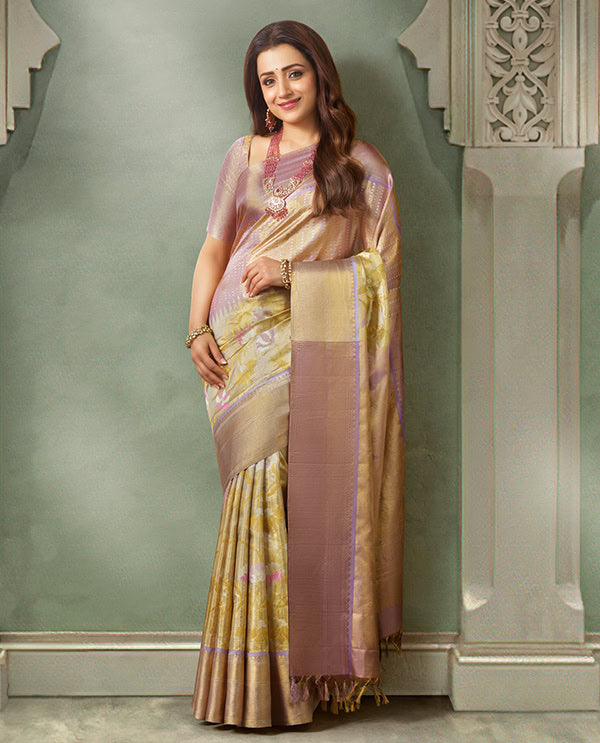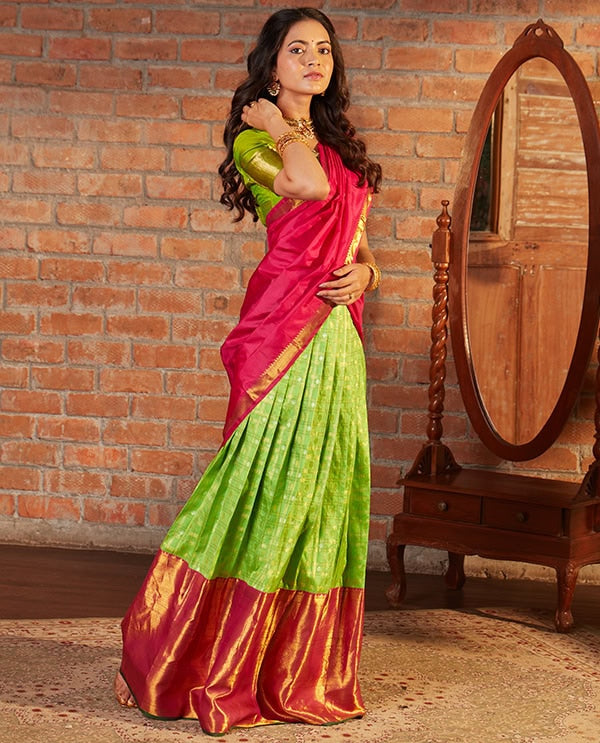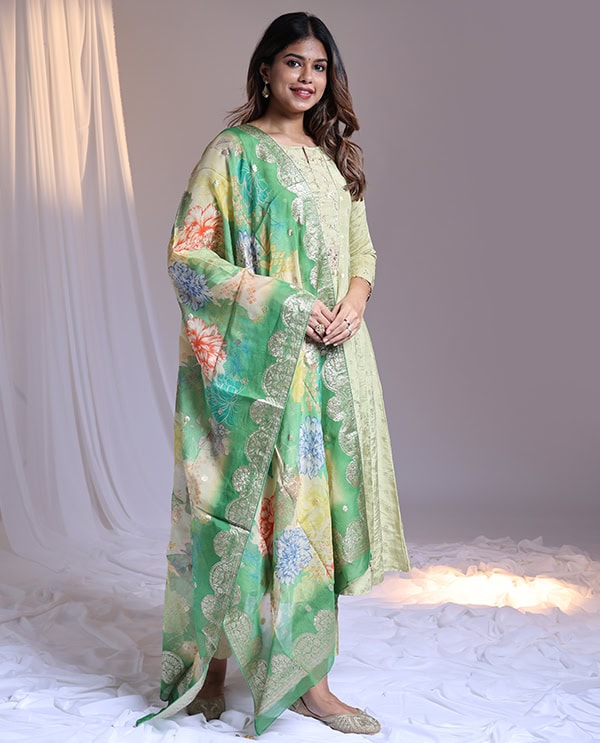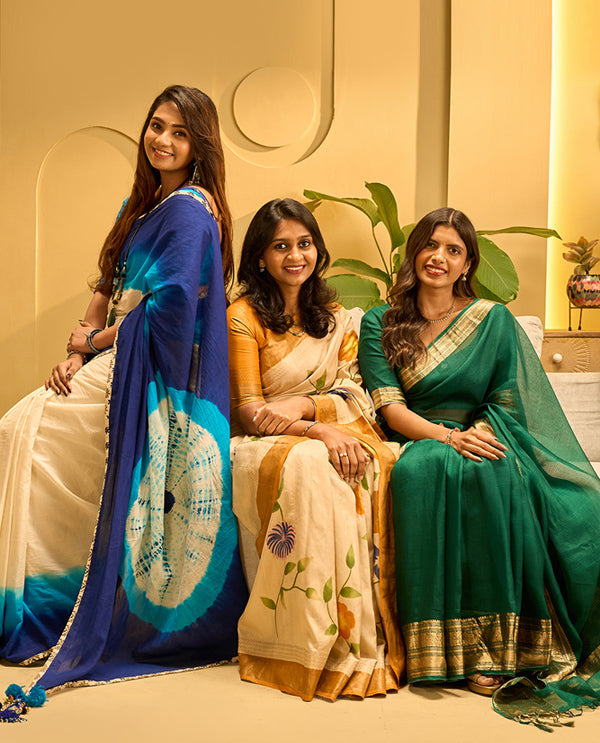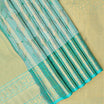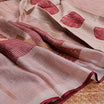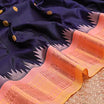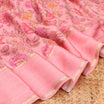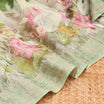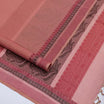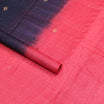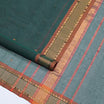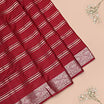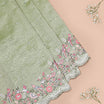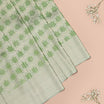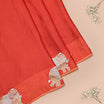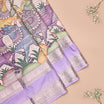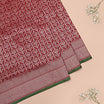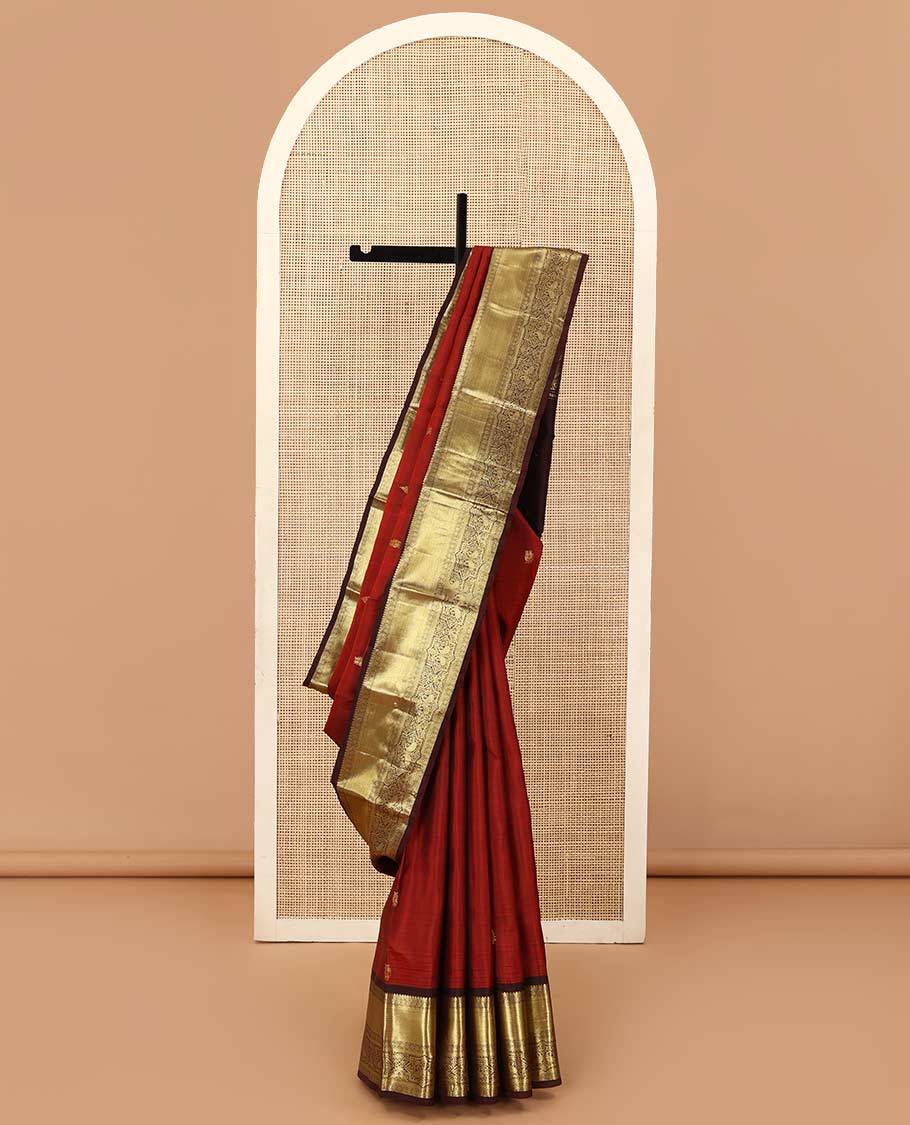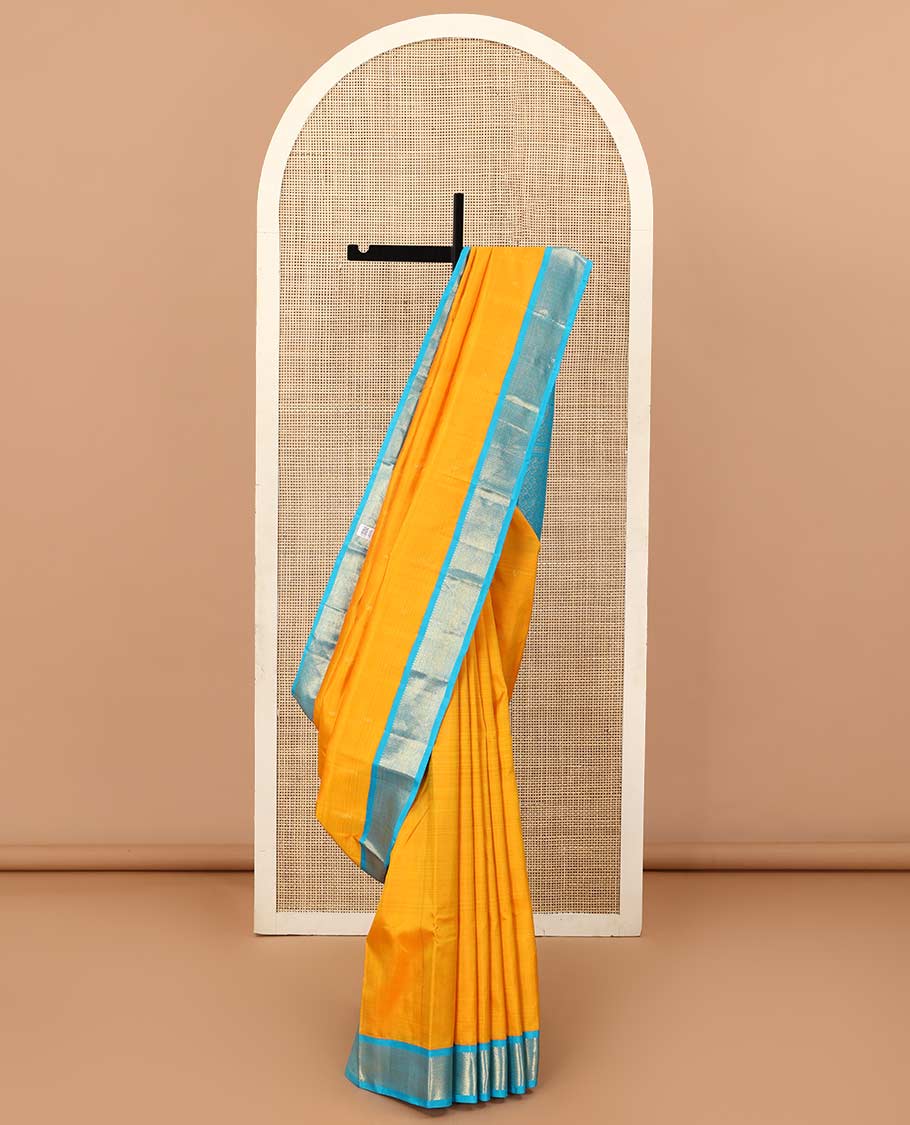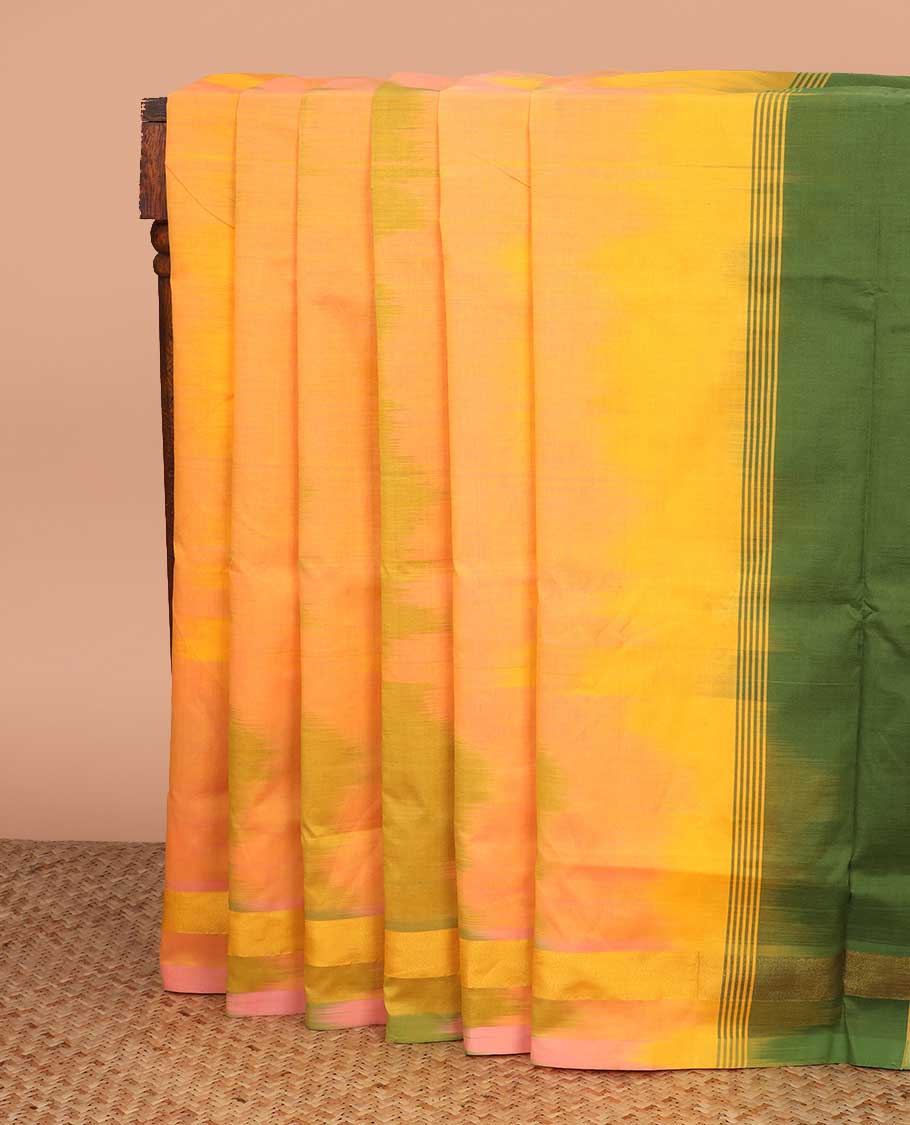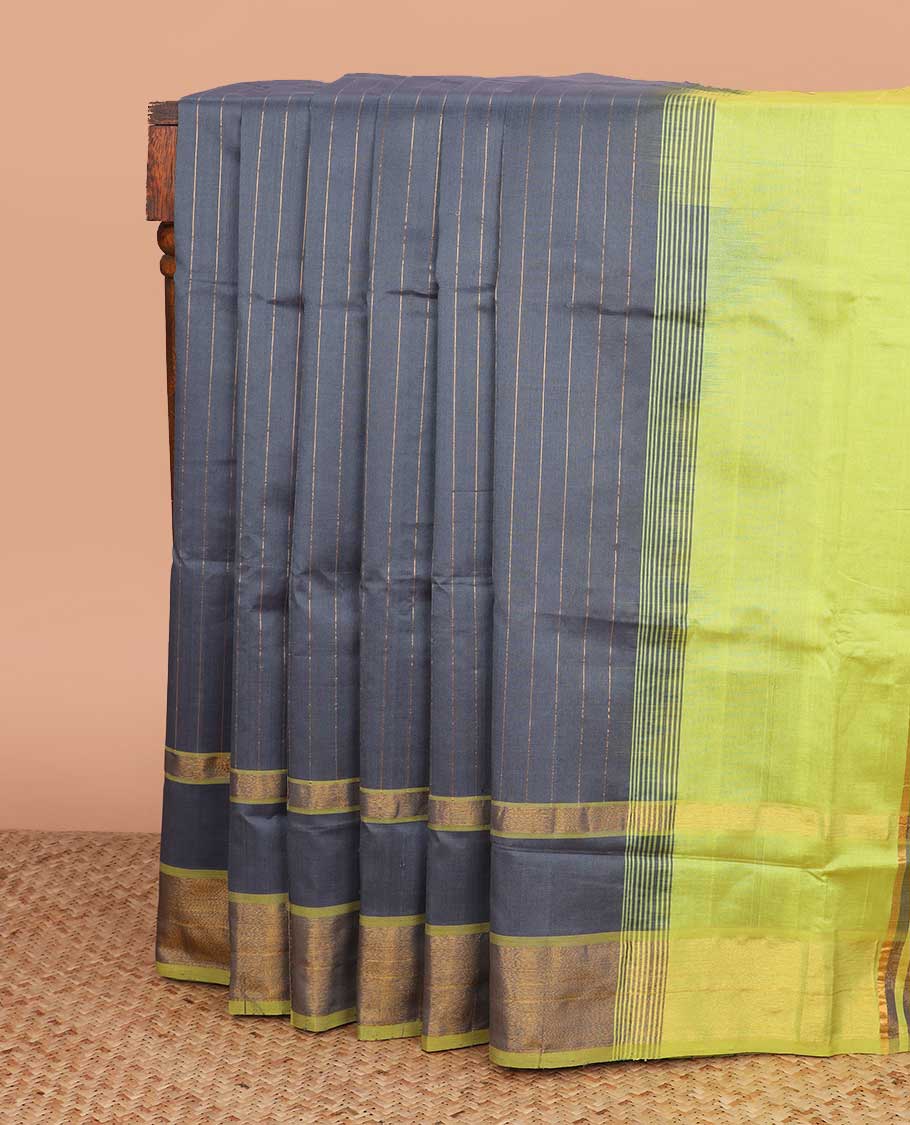How To Take Care of Sarees: Honouring the Legacy Behind Every Drape
A saree is never just a garment. It’s a piece of art, an heirloom, a whisper of tradition passed from generation to generation. Each fold carries stories of laughter and tears, of celebrations and those precious moments shared with our loved ones. Perhaps it’s the soft cotton your mother wore at family gatherings or the rich silk you draped on your wedding day. These sarees are more than fabric; they are memories, woven carefully with time and love.
In many households, in the quiet corners of wardrobes, certain sarees are gently folded and set aside, not because they’ve been forgotten, but because they are meant to be a part of a special moment. They’re checked on occasionally and refolded with care, almost like a ritual.
These aren’t everyday garments; they hold memories, waiting patiently for the right moment to be worn again, to become part of a new story.
“I remember the first time I carefully unfolded an old saree passed down through generations. It belonged to my grandmother, and now my mother keeps it safely stored, waiting to wear it on one of my big days. Perhaps my graduation, or maybe my wedding. She hasn’t worn it yet, but every time she checks on it, I see more than just fabric. I see love, pride, and memories waiting to be made. That’s when I realised—looking after a saree isn’t just about preserving cloth. It’s about preserving the emotions woven into it.”
That is the true essence of caring for a saree. Caring for your sarees is not a chore–it’s a way of preserving memories you cherish. It’s an act of showing gratitude to the hands that created them and the moments they’ve witnessed. It is about honouring the legacy and love they carried.
So, let us embark on a journey together to truly understand how to take care of sarees in a way that preserves their emotional and cultural significance. We’ll go over how to store silk sarees, the importance of saree folding and tips for maintaining ethnic outfits.
Creating a Sanctuary: How to Store Sarees To Protect Your Treasures
Did you know most saree damage does not happen while being worn, but quietly in storage? Fading, tears, mould, and tarnished zari often begin in the closet or drawer. But with a little care, your storage can become a sanctuary, one that preserves the beauty and elegance of your precious sarees. It is more than preserving the piece of cloth; it is also about preserving those memories you cherished.
Now, how to take care of sarees is a tough question, but the answer is simple with just a few easy steps. The first step is learning how to store sarees. Think of wrapping each saree in a breathable cotton or muslin cloth, not plastic, which traps moisture and harms delicate fabrics like silk. The next stage is understanding how to fold and store sarees. You can store your sarees flat, where the saree folding is done gently along their natural pleats to avoid stress on the fibres and permanent creases.
Saree storage ideas include considering wooden or linen-lined boxes for long-term storage, and placing natural protectors, such as neem leaves or lavender sachets, inside to keep insects at bay. For the sarees you wear often, horizontal drawers with tissue paper separators offer easy access while safeguarding your collection.
Avoid placing your sarees where sunlight strikes directly or in damp corners. Metal hangers can quietly damage fabric over time. What you create here is more than storage; it is a haven for the stories your sarees carry.
The Art Of Preservation: How To Store Sarees Properly For Generations To Come
How to store sarees properly isn’t just about cleanliness—it’s about creating a safe, beautiful space for the stories they hold.
A saree isn’t just made up of fabric—it’s woven memory, sentiment, and heritage. From a grandmother’s treasured Kanchipuram silk saree to a chiffon drape worn at your best friend’s wedding, each piece deserves to be stored with the same love with which it was chosen.
Now, to store sarees properly isn’t about rules—it’s about rituals. These timeless practices, handed down through generations, ensure that our sarees don’t just survive, but thrive.
-
Let the Fabric Breathe
One of the oldest, most trusted traditions is simple: change the folds. Saree folding is a crucial step. Every few months, three or four at most, refold your sarees along different lines. This gentle act keeps creases from setting in and allows air to circulate through the fabric. Think of it as giving your saree a chance to stretch and relax.
-
Protect the Beauty Within
The Zari and embroidery on your sarees are more than just beautiful embellishments; they carry the legacy of a rich culture and the heartfelt dedication of the artisans who bring them to life, but they’re delicate. Always fold Zari inwards, away from light and air, and place acid-free tissue between folds. It’s a small step that protects against tarnishing and keeps the shimmer alive. For embroidered or sequined sarees, this tissue barrier also prevents snagging and wear.
-
Avoid Suffocating Your Collection
It’s tempting to stack sarees high in a cupboard, each one a memory, a moment. But when they’re packed too tightly, the fabric begins to fade under the weight. Knowing how to store silk sarees, especially, is crucial, as the intricate work on them requires some extra care. Give them space to breathe, like stories waiting to be retold. During the hush of humid days, let neem leaves or a tiny silica packet stand guard; they act as the quiet protectors of the grace and love woven into every fold.
-
Wrap Each One Like a Gift
Every saree holds a story, and it deserves the care to keep it alive. There are many saree storage ideas available, but the best suggestion is to wrap each saree gently in soft cotton, muslin, or butter paper—especially the ones adorned with delicate embellishments. It’s not just about protection; it’s about honouring the artistry. When you unwrap it again, it’s like opening a memory, reliving that very moment when it first made you feel truly beautiful. It is a step to take care of sarees in a way that preserves their value and the emotions.
-
Label with Meaning
Add handwritten labels—just a simple tag with the fabric type or when you wore it. Maybe it was your first festival after marriage or the saree you wore to your child’s graduation.
Beyond The Saree: Essential Ethnic Wear Maintenance Tips For A Complete Wardrobe
Your saree is often the star of your ethnic wardrobe- like a vibrant Banarasi saree, it doesn’t just dress you, it tells a story of heritage, artistry, and elegance that lingers long after the moment has passed. But the supporting cast - blouses, dupattas, lehengas, kurtis—also needs care to tell a complete story. Here are some tips for maintaining ethnic outfits.
-
Blouses: Preserve the Shape
Blouses, for instance, should be stored separately, folded with a cotton liner or hung on padded hangers to maintain their shape and avoid shoulder puckering.
-
Dupattas: Handle with Gentle Precision
Dupattas with intricate embroidery or mirror work must be folded gently and stored alongside sarees of similar fabric weight to prevent crushing. Mixing heavy and light materials in storage can lead to misshapen outfits.
-
Air Them Out Regularly
Air out all ethnic garments every few months, particularly during humid seasons, to prevent mildew and unpleasant odours. Place them in a shaded, well-ventilated area for a few hours to allow the fabric to breathe without risking sun damage. For added freshness and natural insect protection, tuck scented sachets filled with lavender or cedarwood into your storage spaces. These not only absorb lingering moisture but also leave behind a subtle, pleasant fragrance, helping your garments stay as vibrant and cherished as ever.
-
Lehengas and Occasion Wear: Structure Matters
For garments worn only on special occasions, like lehengas, use breathable garment bags and hang them vertically with proper support to retain their structure. To take care of the saree can be a common wardrobe ritual, but caring for ethnic wear as a whole ensures that every cherished outfit preserves its story with grace.
Ethnic wear maintenance tips like these not only protect the physical outfit but keep your wardrobe fresh, meaningful, and ready for celebration.
She's passing on more than just a saree; it's a legacy of beauty. Indeed, learning ethnic wear care tips can ensure you preserve memories in your wardrobe, which later becomes a gift of lasting love.
Regal Radiance: How To Care For Silk Sarees At Home With Tenderness
Silk sarees are the crown jewels of any collection, their shimmer and softness unmatched, but silk is delicate – it is sensitive to moisture, sunlight, and time. Knowing how to take care of the sarees, especially knowing how to store silk sarees at home, requires special attention to pass it down to generations for years. Whether it’s the elegant Mysore silk, the rich Semi Patola silk, or the exquisite Tussar silk, these treasures deserve gentle care.
If you’ve ever wondered how to store silk sarees, an important tip is to never hang silk sarees for long; their delicate weight can stretch and alter their shape. Instead, fold them gently, like wrapping a cherished memory, and store them flat. Avoid plastic covers that trap moisture; use breathable muslin wraps to let the silk breathe, just as it did when first woven. When it’s time to press out the creases, never let the iron touch the silk; directly place a cotton cloth as a gentle shield and keep the heat low, protecting every shimmer and thread. After ironing, ensure the saree folding is completed in a gentle manner.
For stains, avoid harsh detergents or bleach; blot gently and seek professional cleaning. Periodically air your silk sarees in the shade and change the folds every few months, and remember a silk saree thrives when worn. To care for silk sarees at home, they should be celebrated; they should be cherished. After all, this is also a way to take care of the saree with love because a silk saree thrives when it’s not just locked away in storage.
The Ritual Of Reverence: Mastering How To Fold and Store Sarees with Care
-
Preserve the Zari, Prevent the Wrinkles
Saree folding should be done with care, and if done properly, it helps preserve the delicate zari, prevents deep wrinkles, and extends the life of your treasured fabric. This mindful approach ensures your sarees age with grace and beauty.
-
Begin with Gentle Alignment
Lay the saree flat with the pallu facing towards you. Fold it lengthwise, aligning the borders neatly. Continue folding along the natural pleats until it forms a tidy rectangle that respects the flow of the fabric.
-
Protect the Finer Details
It is imperative to know how to store sarees properly, especially how to store silk sarees, for every beautiful memory deserves to be preserved. For sarees with embroidery or zari, like the elegant Kanchipuram zari design, place soft tissue paper or unbleached cotton between folds. This simple step safeguards delicate embellishments from rubbing, snagging, or tarnishing over time.
-
Wrap and Store with the Intention
Delicate fabrics such as Chiffon sarees need gentle folding and breathable storage to preserve their softness and graceful drape. Treating these light sarees with tender care ensures they remain as enchanting as the day you first wore them.
-
Honour the Legacy with Every Fold
Learning how to fold and store sarees is more than a practical routine; it is a quiet tradition of respect. Each thoughtful fold helps ensure that every saree’s story continues to unfold with beauty and emotion.
Watch our fun challenge on the ultimate saree folding challenge below!
At Daughters of Pothys, we host events and conduct challenges, curated to bring knowledge to you in a fun and engaging way. The art of wearing and preserving a saree is a beauty within itself, so follow us along at Daughters of Pothys as we navigate this journey of honouring a legacy together.
Tips For Maintaining Ethnic Outfits With Mindfulness
Ethnic outfits aren’t just what we wear, they’re part of the stories we live. The soft rustle of a silk saree, the sparkle of a lehenga as you twirl, the charm of a Samudrika pattu draped just right, they each hold a piece of a celebration, a family moment, a joyful beginning. Woven into every thread is a little bit of tradition, a lot of love, and memories that always find their way back when you wear them again.
When maintaining ethnic outfits, be thoughtful with layering and avoid placing heavily embellished garments atop lighter ones, as the weight can flatten delicate details and alter the garment’s shape over time. Use acid-free tissue paper between folds, and cotton muslin covers to allow breathability while protecting against dust.
Rotate your ethnic wardrobe with the seasons—let even the rarely worn sarees feel a bit of sunlight and air. It helps keep them fresh and full of life. For those vintage or heirloom pieces, take a quiet moment to honour their journey. Snap a photo, write a note about when it was worn, and by whom. These little things keep the memories alive, just like the sarees themselves.
Knowing how to care for silk sarees at home ensures that every step, every twirl, has been recorded through the woven threads of your cherished piece. These aren’t just archival steps; they are acts of homage to the emotional value these pieces carry. What may seem like an old sherwani or a grandmother’s saree is, in fact, a thread in the fabric of family history. These are simple yet powerful tips for maintaining ethnic outfits that help you preserve not only beauty but also emotion.
Every ethnic garment speaks of tales and stories, bursting with emotions as you wrap it around you. Indeed, vintage ethnic wear holds in its folds the very same feeling. If you have any traditional vintage wear, you can also refer to our guide on restoring vintage sarees and how to care for them!
Every Fold is a Promise To Preserve Beauty and Memory
Your sarees and ethnic wear are more than just adornments for special occasions. They are not just a piece of cloth; they are silently accompanying you through festive nights, wedding vows, temple visits, and the quiet grace of tradition. Learning how to take care of sarees, exploring mindful saree ideas, and embracing holistic maintenance practices are about more than keeping your clothes preserved.

